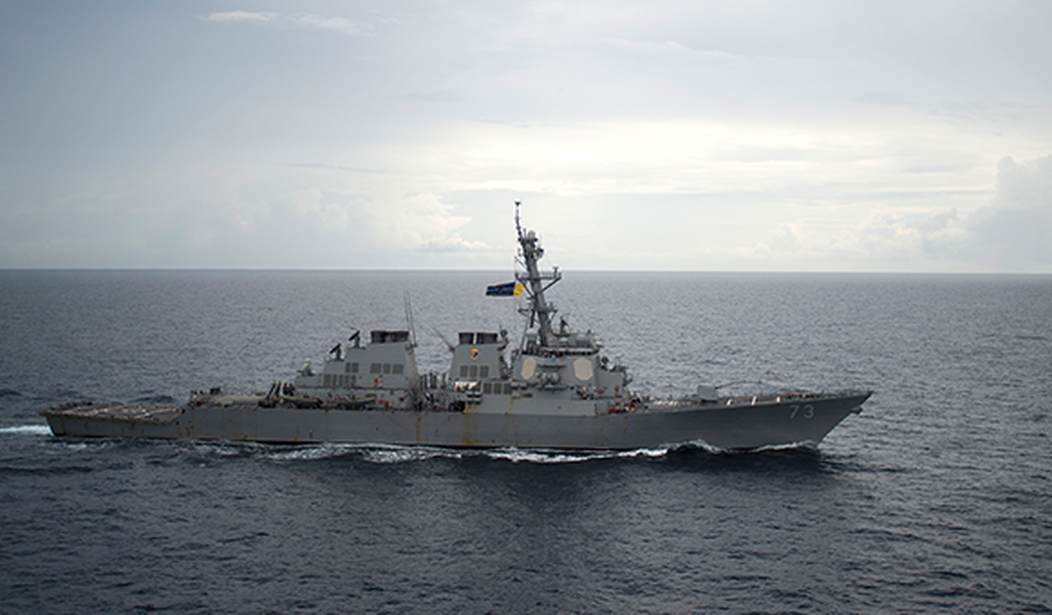“Locking down” or restricting population movement is one the most common yet controversial public health countermeasures used by public health authorities, the other “Big Three” being vaccination, testing for infection, and masking. People either love or hate lockdowns, usually on the basis of some political or perceived moral preference. Few analyze lockdowns from the standpoint of epidemiology because not many feel qualified to do so.
However, it’s a safe bet that more people have watched submarine movies than have attended public health or medical school. What follows is a general analysis of lockdowns in terms of concepts that would be familiar to anyone who has watched Run Silent, Run Deep, The Hunt for Red October, or Greyhound.
Public health officials are hunting unseen foes — infected individuals — who commonly reveal themselves in one of two ways: going to the doctor (equivalent to a sub revealing its presence by torpedo) or detection by testing (equivalent to acoustic detection). This yields the raw material for the public health hunt, namely information. Information makes it possible to localize the unseen threat, isolate it and destroy it (by curing the patient if possible).
To use the submarine movie analogy, information tells you where to drop your depth charges and put your destroyers. The more focused the attack, the better the information the escort commander likely possesses. Similarly, if infected-contacts data could be localized effectively, the public health engagement space would be much more confined.
The surprising thing about many lockdowns all over the world is they are exactly the opposite of the ASW ideal. Politicians seem to believe that the more widespread and restrictive a lockdown is the more effective it is. The more noise and bangs the better. But in reality, what huge lockdowns unambiguously proclaim is how little actionable information they really have. They are locking swathes in the hope of retarding something by sheer volume of effort. If they actually knew where the threat was the restricted area could be much smaller.
A big enough lockdown is bound to have some effect on the pathogen, spread but at the cost of immense collateral damage. In exchange for the reduction, businesses go bankrupt and people lose their jobs. Scale is wildly inefficient and sometimes infeasible. Greyhound could try depth charging a hundred square miles of Atlantic but that would kill a lot of fish and probably be impossible.
The real WW2 and Cold War answer to the dilemma was information. The military has known for years that required force is inversely proportional to actionable information. The more information, the smaller the bomb, the less the collateral damage. During the War on Terror, the size of U.S. warheads progressively shrank down to the Flying Ginsu missile.
Both the Central Intelligence Agency and the Pentagon have used the weapon while closely guarding its existence. A modified version of the well-known Hellfire missile, the weapon carries an inert warhead. Instead of exploding, it is designed to plunge more than 100 pounds of metal through the tops of cars and buildings to kill its target without harming individuals and property close by.
To the targeted person, it is as if a speeding anvil fell from the sky, the officials said. But this variant of the Hellfire missile, designated as the R9X, also comes equipped with a different kind of payload: a halo of six long blades that are stowed inside and then deploy through the skin of the missile seconds before impact to ensure that it shreds anything in its tracks
By comparison, much of the information-poor global pandemic response is still in the Dresden and Hamburg area bombing stage. The size of the lockdowns and magnitude of the mandates around the world give the impression that politicians are still more interested in sending a message than receiving a signal. Maybe that’s because governments are better at propaganda than signal processing. And the message is, “We’re demonstrating seriousness because we think it might boost morale and we can’t do anything else”.
Governments, like marching bands, have a limited repertoire. If they don’t already know how to refine their search, they’ll be a long time learning.
Without guidance from a constantly refreshed data stream, these gigantic exercises may achieve little but demonstrate earnestness. Bigger and more draconian is possibly a sign of failure. On the contrary, when the pandemic restrictions grow progressively less widespread and more precise, that’s when you know we’re winning.
______










Join the conversation as a VIP Member